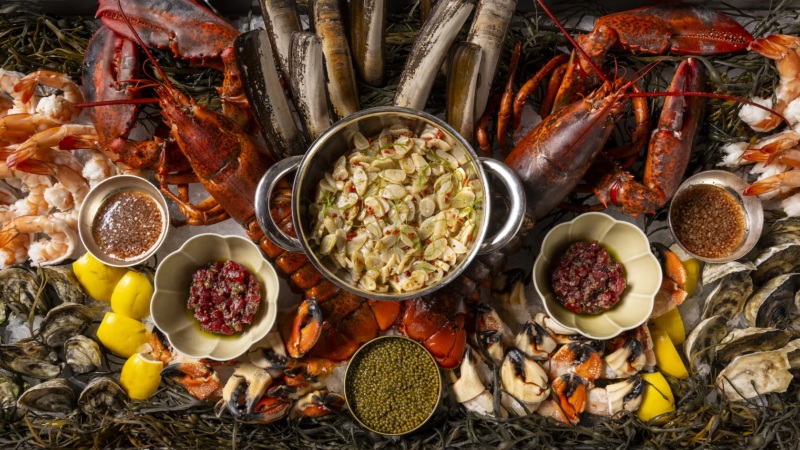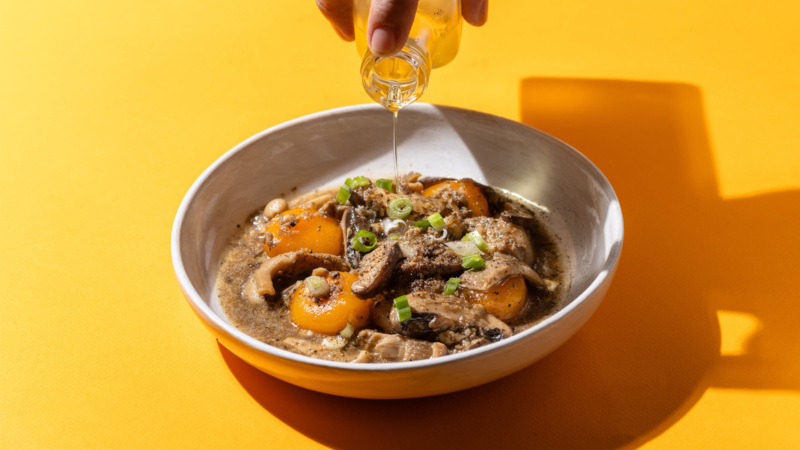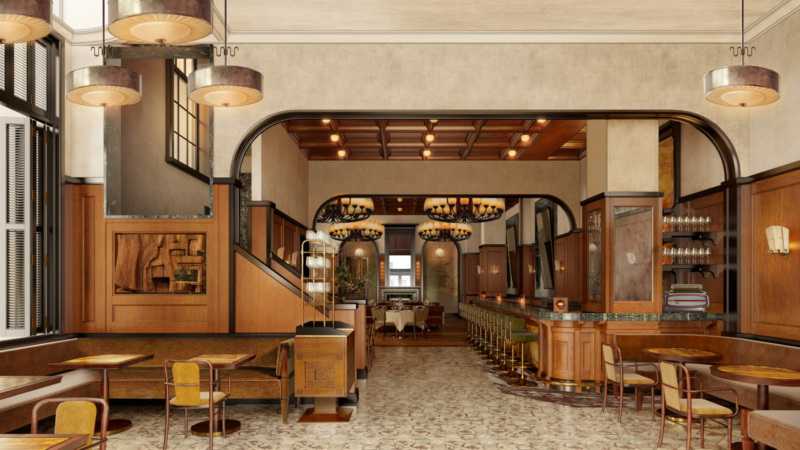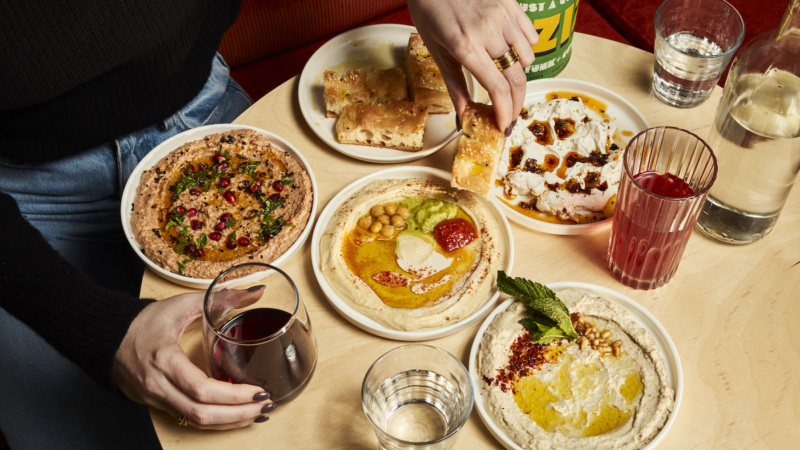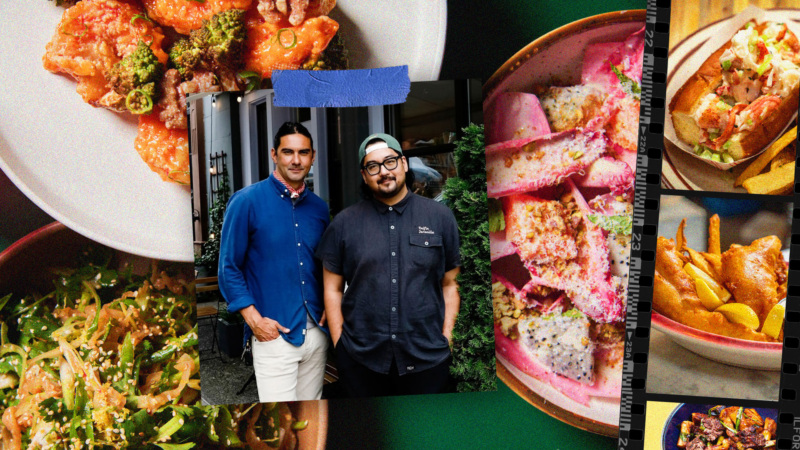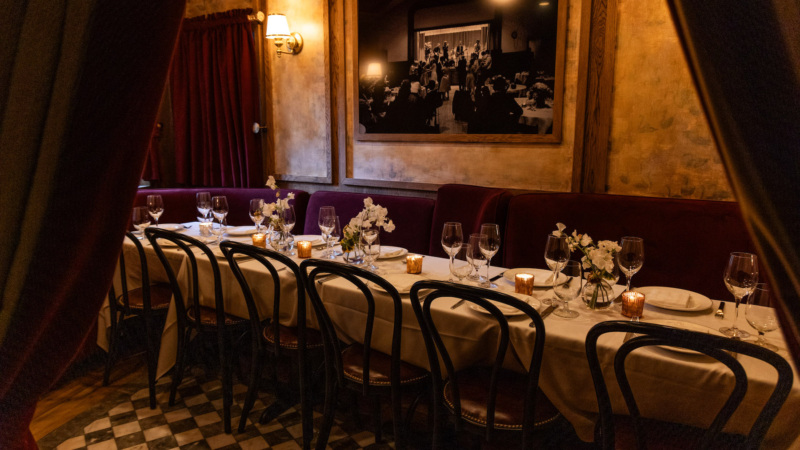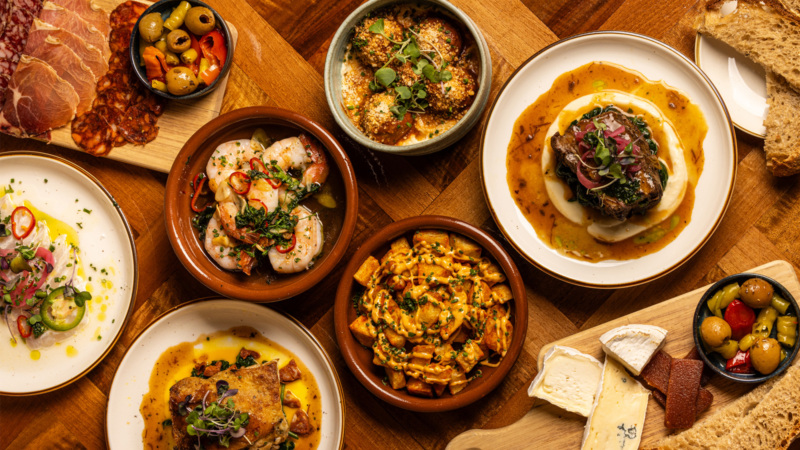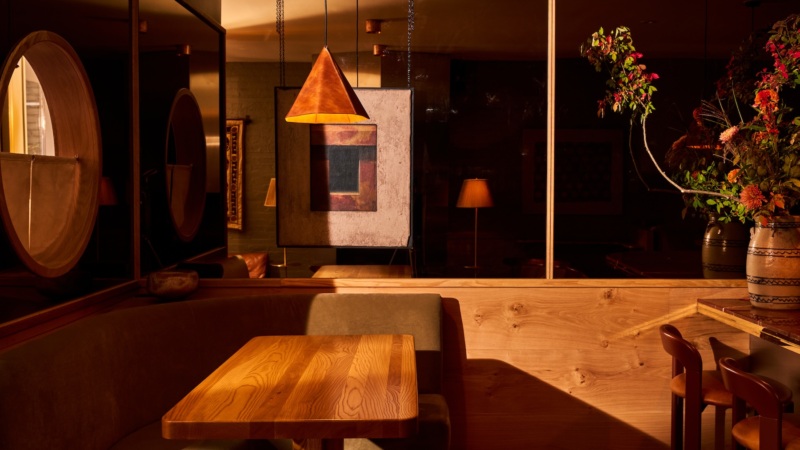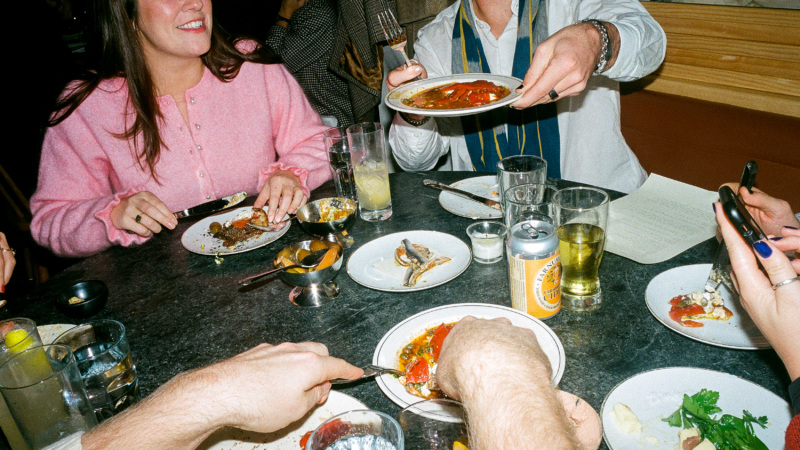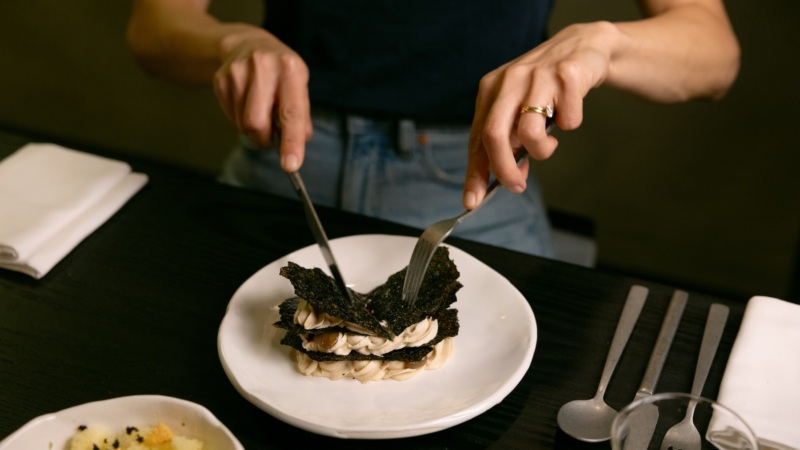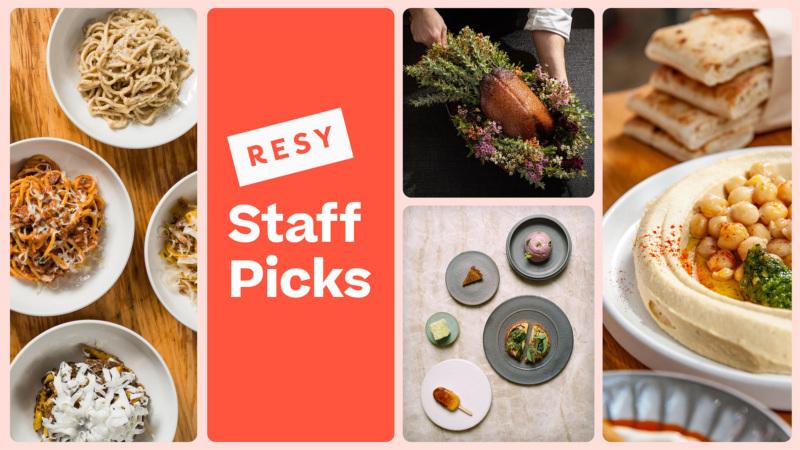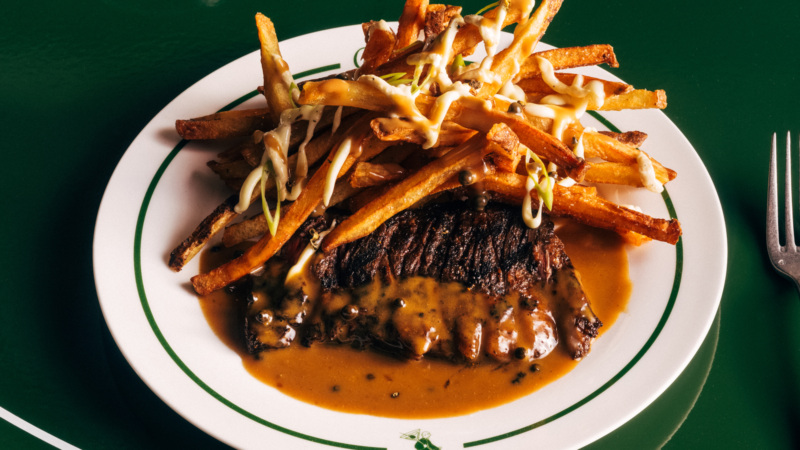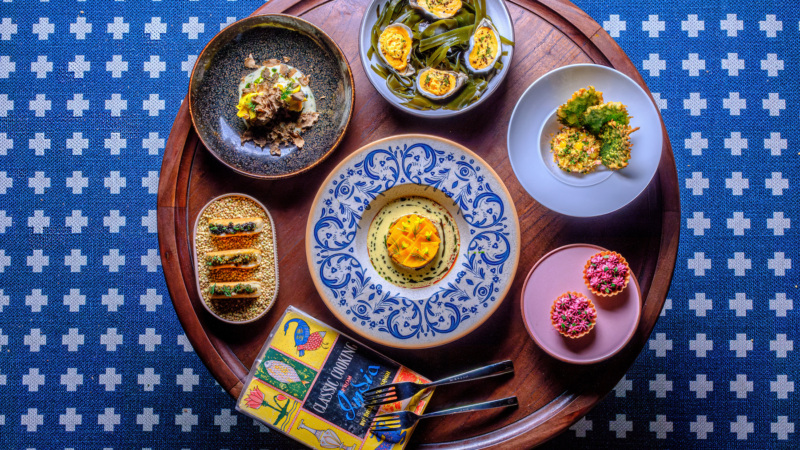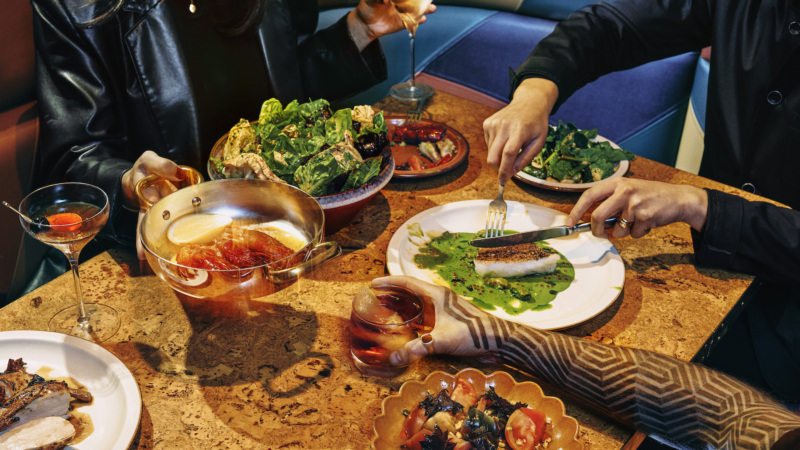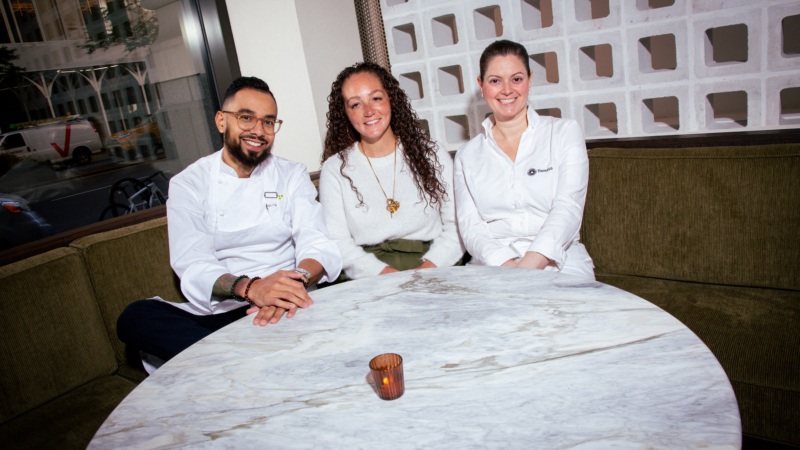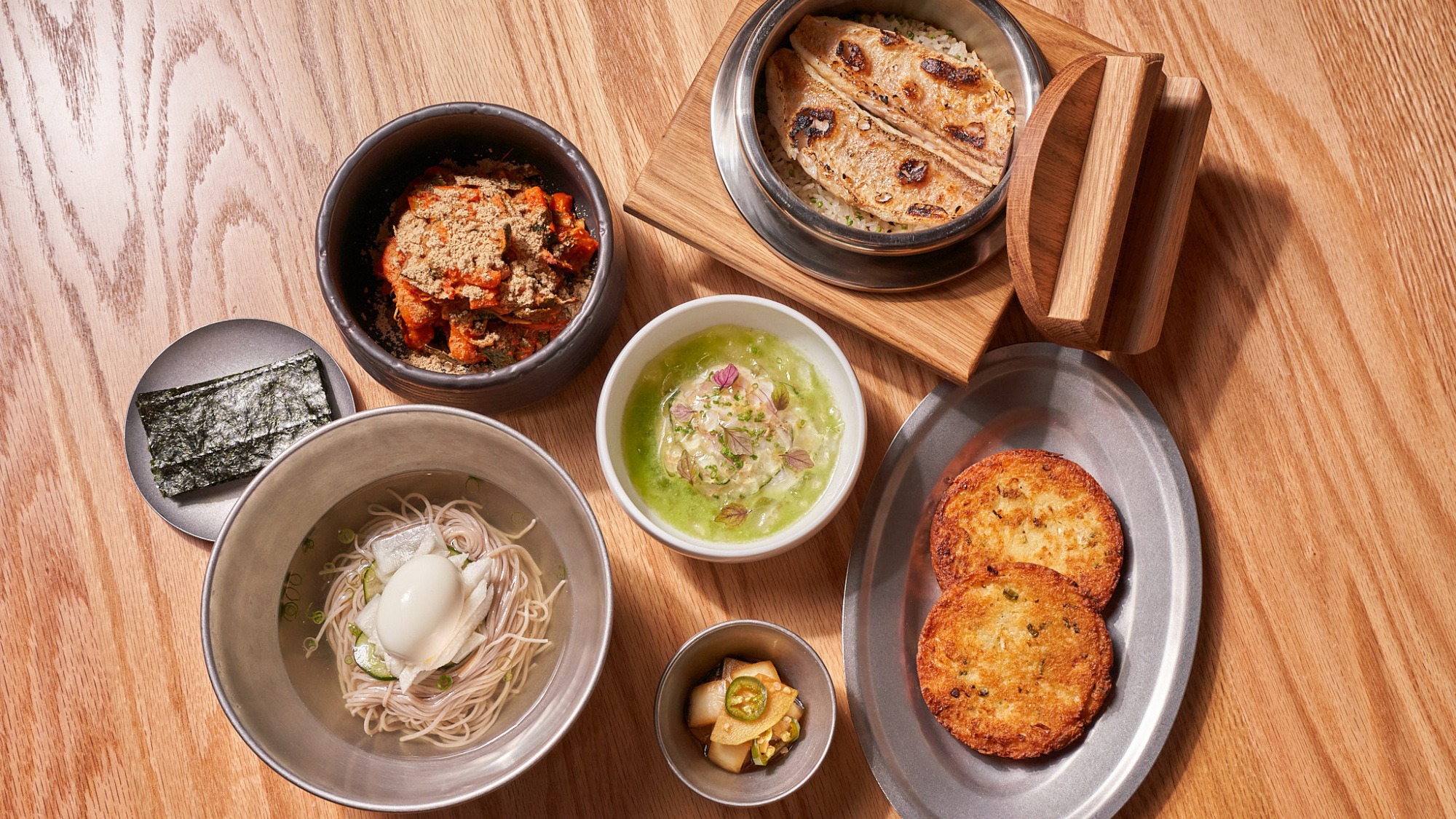
All About Moono, From the Michelin-Starred Chef Behind Jua
Before you go to a restaurant, what do you want — or need — to know most? In our series, The Rundown, we’re sharing all the essentials about newly opened restaurants.
It’s just four days from opening, and sections on the menu at Moono have been wiped clear, changed up, and added.
He’s a perfectionist, says general manager Jaehoon No, about chef Hoyoung Kim, who was awarded a Michelin star for his work at Jua, and is now opening Moono in NoMad as a part of Hand Hospitality Group’s growing portfolio of restaurants (OkDongsik, LittleMad, Ariari, Seoul Salon) throughout New York. “He’s the type of chef who’s still really contemplating until the very last minute.”
When Moono does open on Wednesday, May 31, do expect to see the same level of perfectionism and craft that you saw at Jua on full display, as well as an even broader perspective on what Korean cuisine and cooking can be. “I want to show even more aspects of Korean food that people don’t know about,” Kim says, about Moono.
Here’s everything you need to know about Moono before you go.
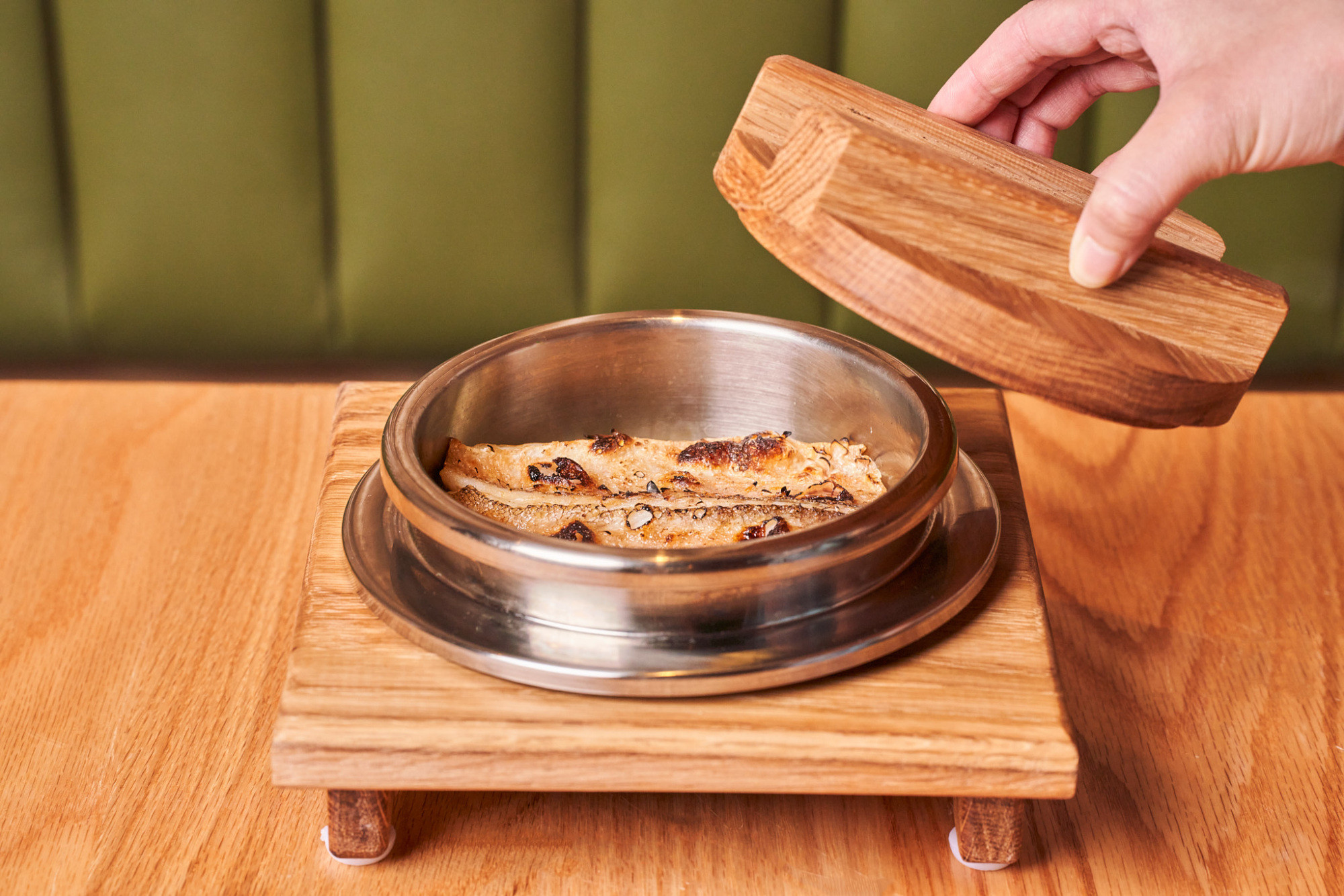
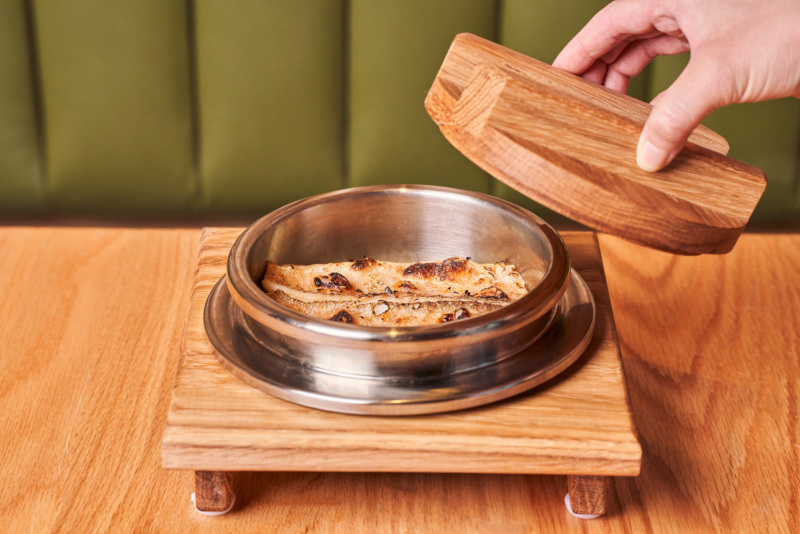
1. Moono is intended to fill the gap between casual and fine-dining Korean restaurants.
Back in 2021, chef Hoyoung Kim observed the swell of modern Korean American establishments in New York’s dining scene. “On one side, there are casual restaurants, like those in Koreatown,” he says. “On the other side, there are fine-dining, tasting-menu restaurants,” like his own Jua. “I wanted to fill that gap between the two sides.”
While Jua offers a $135 seven-course tasting menu, an appetizer and an entree on Moono’s à la carte menu can run between $35 and $80.
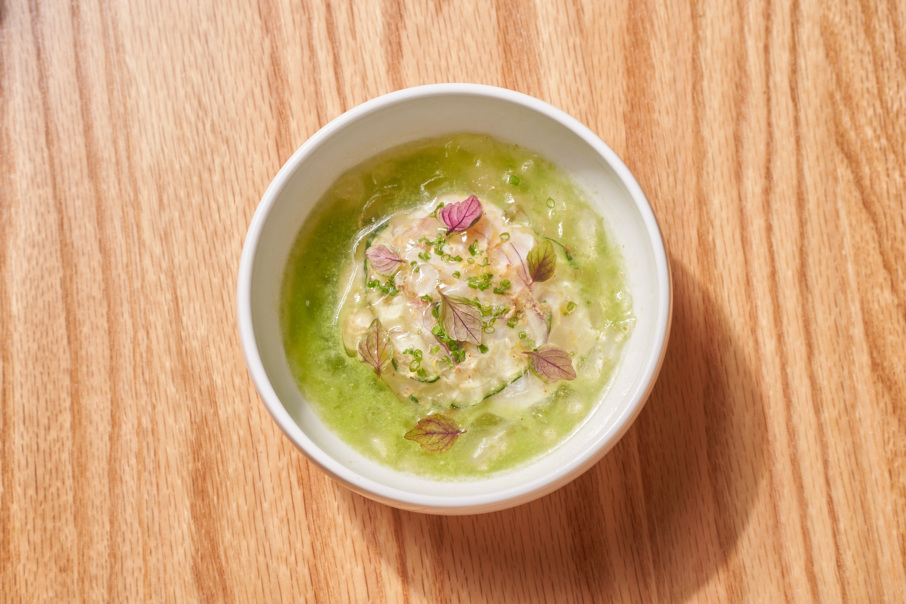
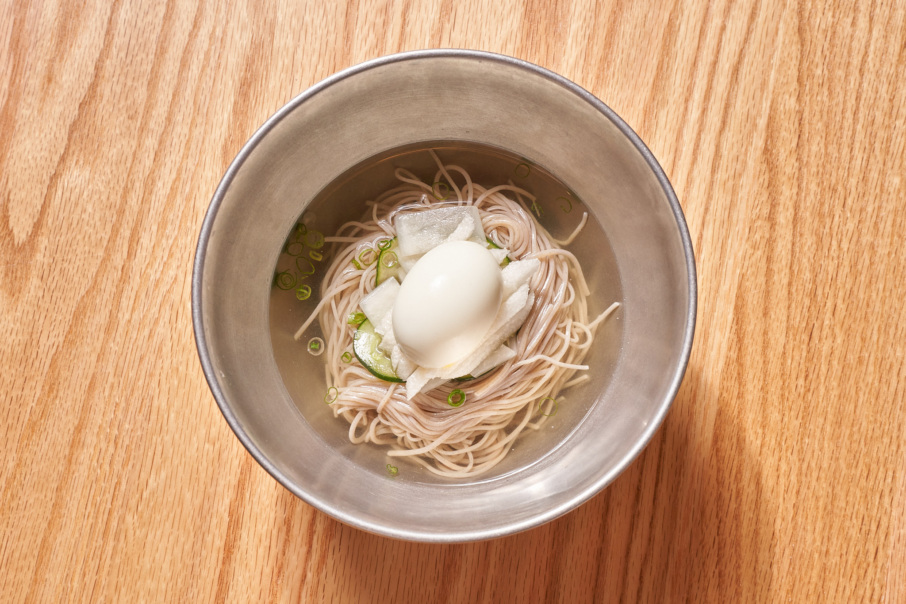
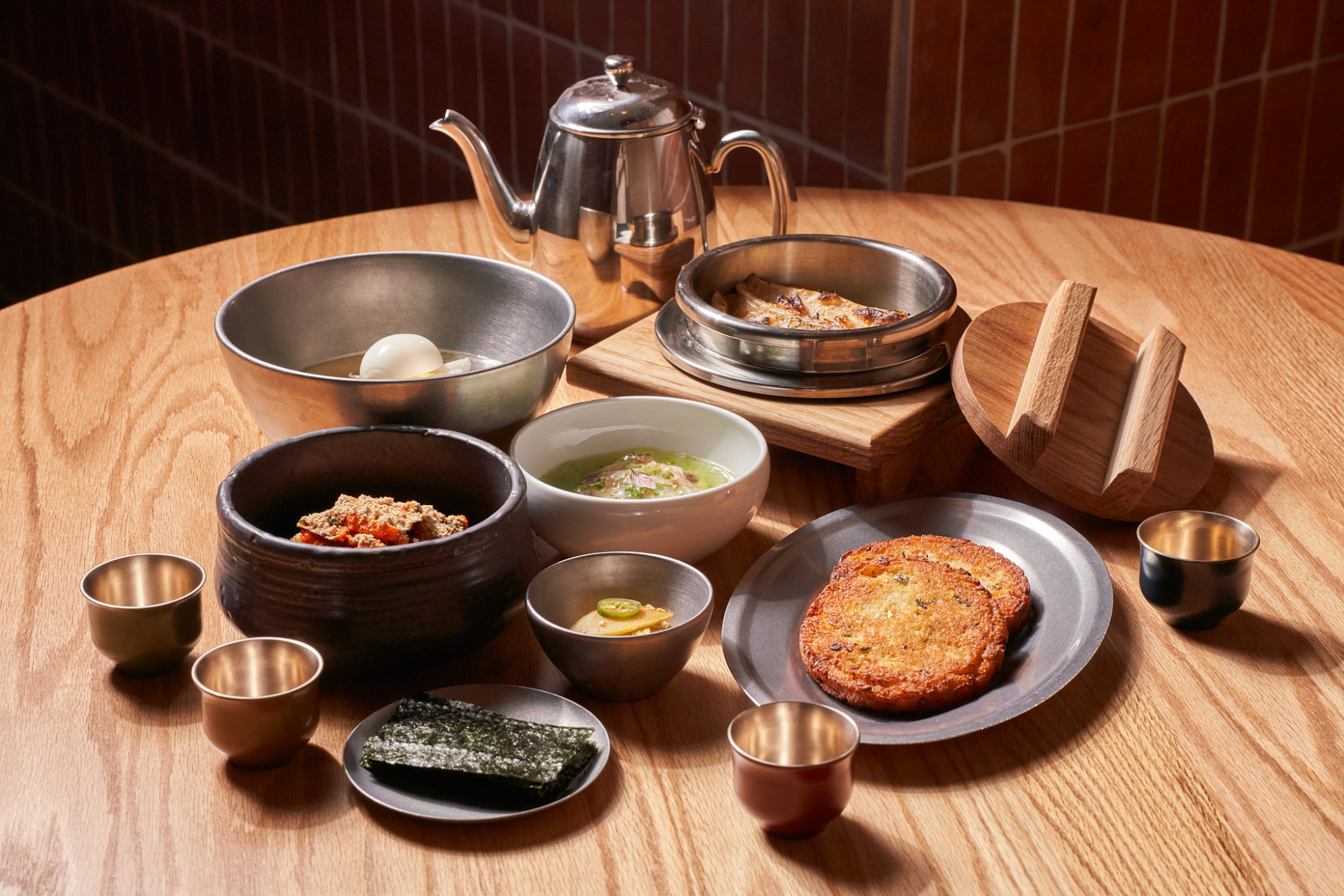
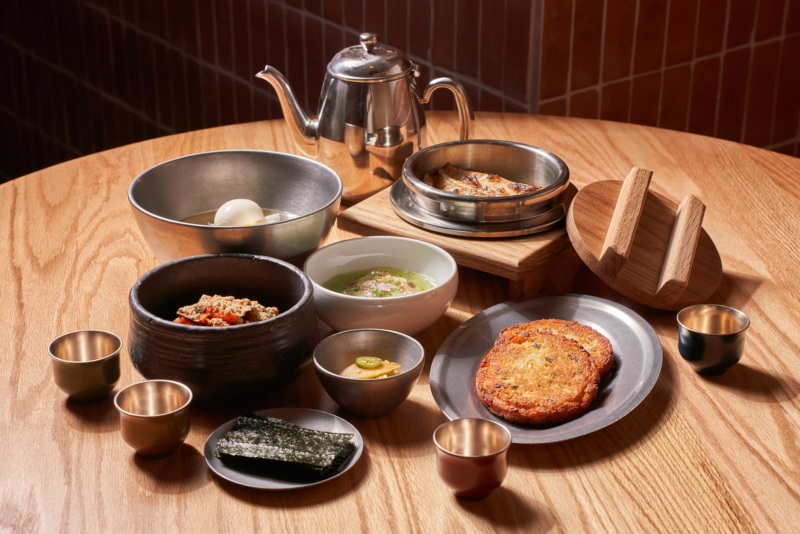
2. So, what’s on the menu?
Moono doesn’t offer a traditional Korean menu. While the specific categories listed are also found in other Korean restaurants — like jeon (pancake), seafood, meat, noodles — the menu is much trimmer than your typical generalist à la carte Korean restaurant whose menu runs through pages and pages of text and photos. Most of the categories on Moono’s menu features just two dishes, and the majority of these are off-the-beaten-path selections.
Yes, there are ubiquitous present-day Korean family favorites like fried dumplings, mungbean pancakes, and naengmyeon, but Kim also pulls from his intrinsic creativity as well as time-honored traditions. For instance, the star of one of his muchim dishes (typically prepared with raw or slightly blanched vegetables that get mixed with seasoning) is the scallop. To this, he adds oi naenguk (a chilled cucumber soup usually served alone) and crushed agar jelly. “It’s a play of freshness, acidity and texture,” he says.
For jeon, he prepares a buckwheat crepe with radish kimchi, glass noodle, and oyster. For his soup offering, Kim delves deep into Korean royal court cuisine with a rarely-seen-in-New-York hot pot served in a sinseollo, a cooking vessel shaped like a bundt pan with a hole in the middle for holding hot embers that keep the soup hot throughout the meal. His sotbab dish (a scorched rice dish commonly listed as dolsot bibimbab) deviates from the norm with a base of luxurious Golden Queen rice that’s cooked in savory beef broth and is topped with fresh slabs of uni.
His noodle dish is an upscale take on janchi guksu (banquet noodles in broth) that are typically served in family get-togethers and street carts. “It’s a dish that’s popular but cheap” but hasn’t quite made its way outside of Korean culture here, Kim explains. “I wanted to introduce this dish.” His version brings in foie gras “to make the broth rich,” anchovies, seaweed, and white somyeon noodles.
Something you won’t find on the menu, or on the table at Moono, however, is banchan, an assortment of small bites that are often served as a complement to your meal in most traditional Korean restaurants. Instead, Kim says that the cold dishes on the menu double as shareable appetizers.
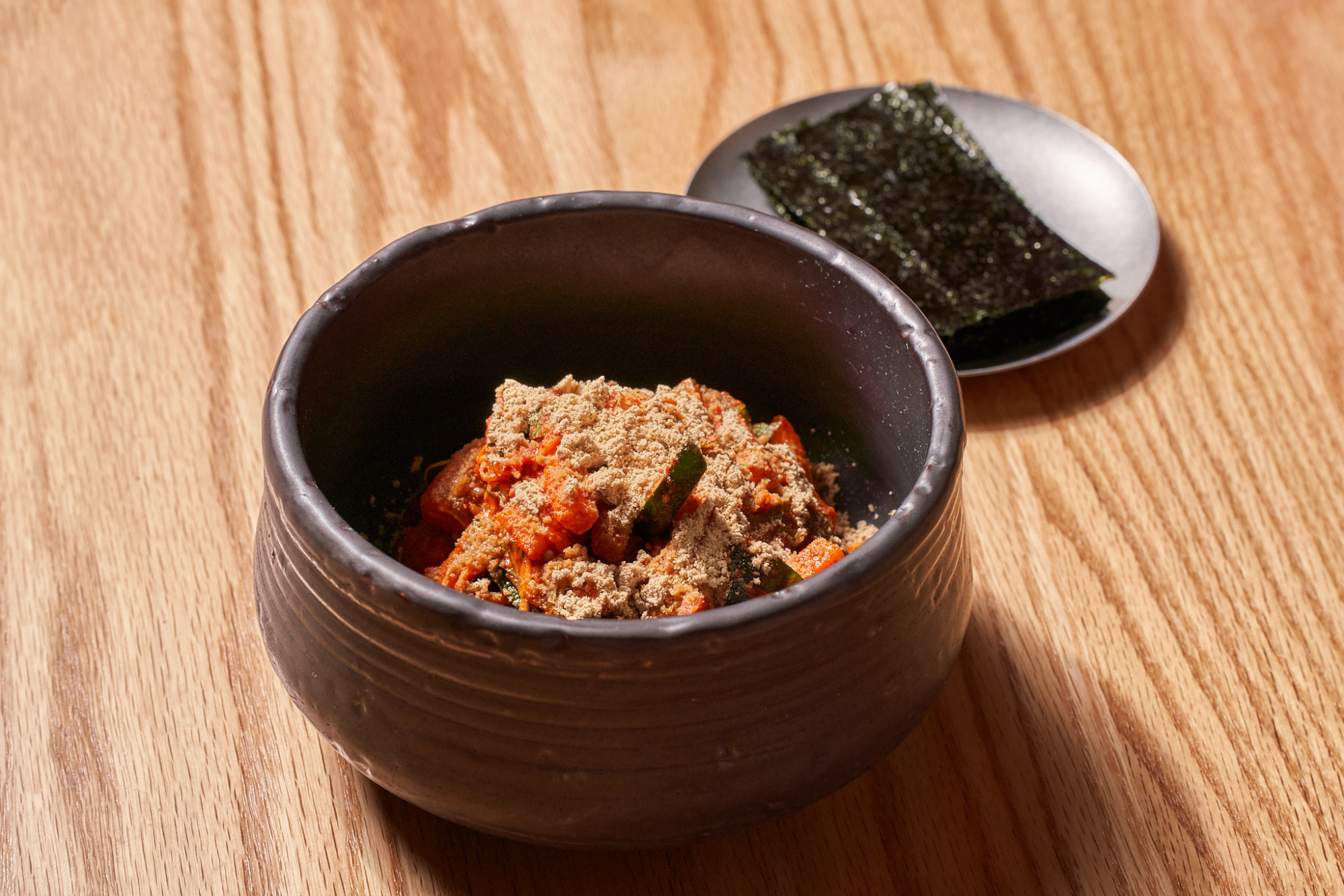
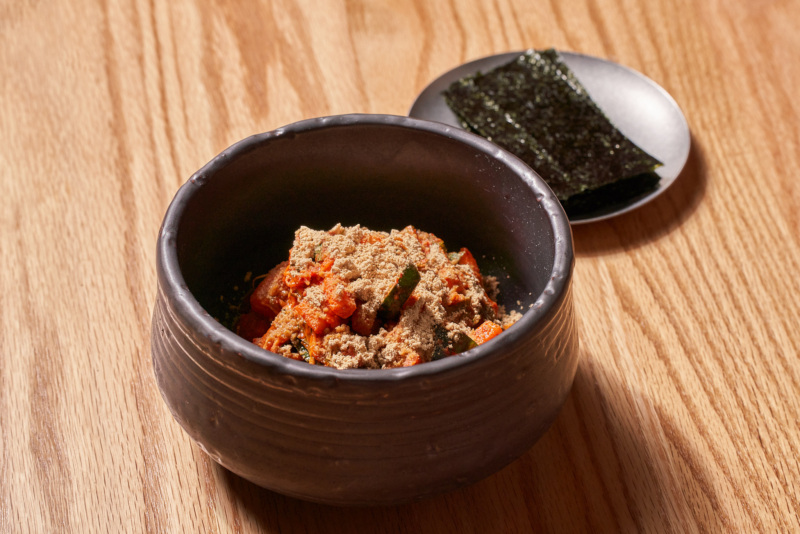
3. You should play with your food here.
There’s one particular Korean eating custom that Kim is literally bringing to the fore at Moono, and it involves the “ssam” section at the top of the menu. Lettuce wraps at Korean barbecue spots have become mainstream knowledge, “but we wrap other foods, too,” he says. (Any Korean parent can tell you their ultimate kids’ meal hack is a spoonful of rice wrapped in a small laver of seaweed.) And Kim pulls this practice into his restaurant. “It’s such a fun part of eating Korean food.”
He sources Bakka salmon from the Faroe Islands, cures it slightly, and seasons it with gochujang, vinegar, gochugaru, and sesame oil, and then tops it with toasted soybean powder. He serves this with toasted seaweed for wrapping. Kim’s other ssam dish invites diners to wrap soondae (Korean blood sausage) in a perilla leaf with a schmear of gochujang.
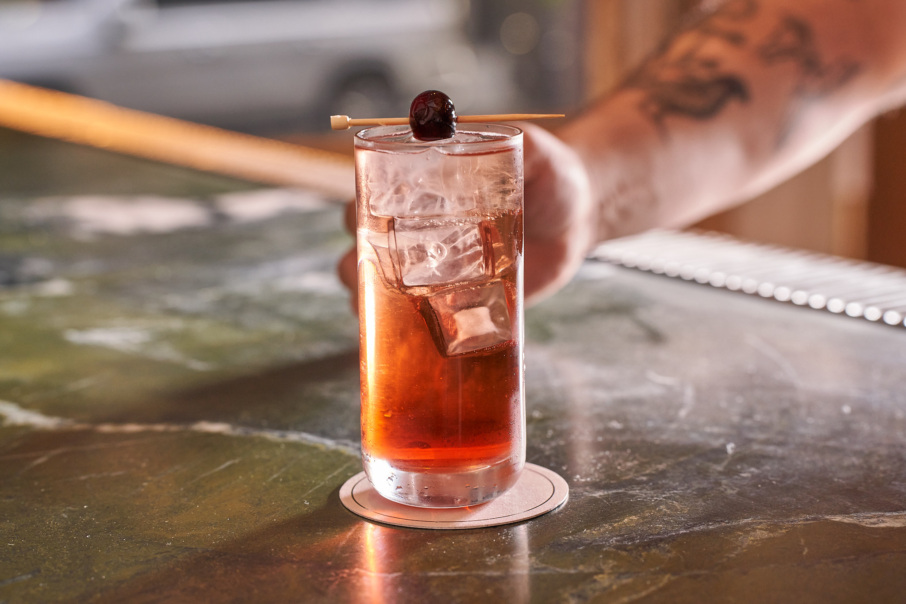
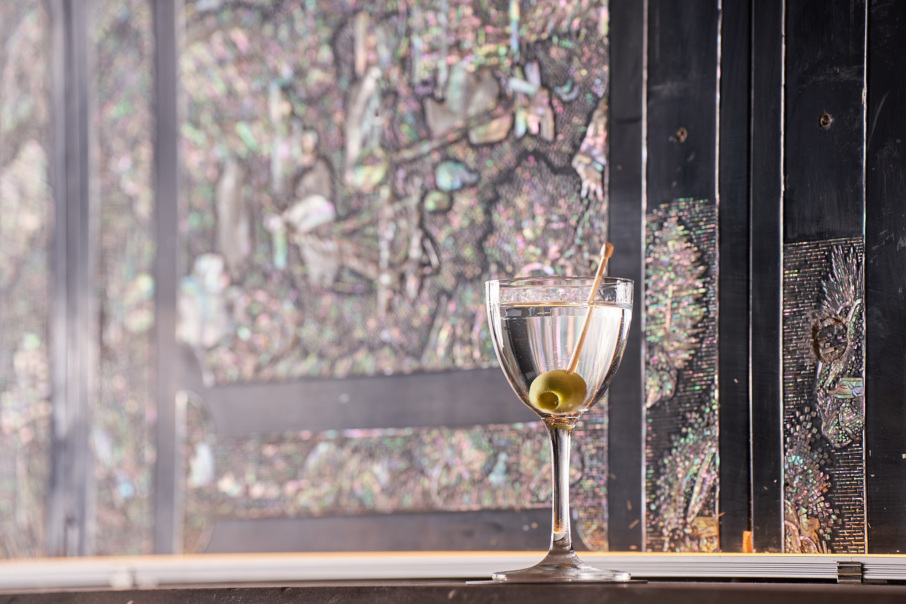
4. Don’t sleep on the drinks.
General manager No is also running Moono’s beverage program, and from the Korean imports to the in-house mixology, he’s making sure he zeroes in on the Korean essence of everything. He’s working with importers Anjuu and WooriSoul, founded by Korea’s first master sommelier, to usher in premium distilled sojus, makgeollis, yakjus (clarified rice wine), and fruit wines (with a base of assorted fruits like black raspberries or plums).
From there, it’s up to head bartender Mario Castro to put his spin on cocktails. Expect to find a dirty martini with a splash of dongchimi (water kimchi brine) in place of the olive pickling liquid.
There’s a European wine list, too, which includes Burgundies and trending natural wines. “I found that the funkiness of the natural wine and the fermented flavor of Korean food pair well,” says No.
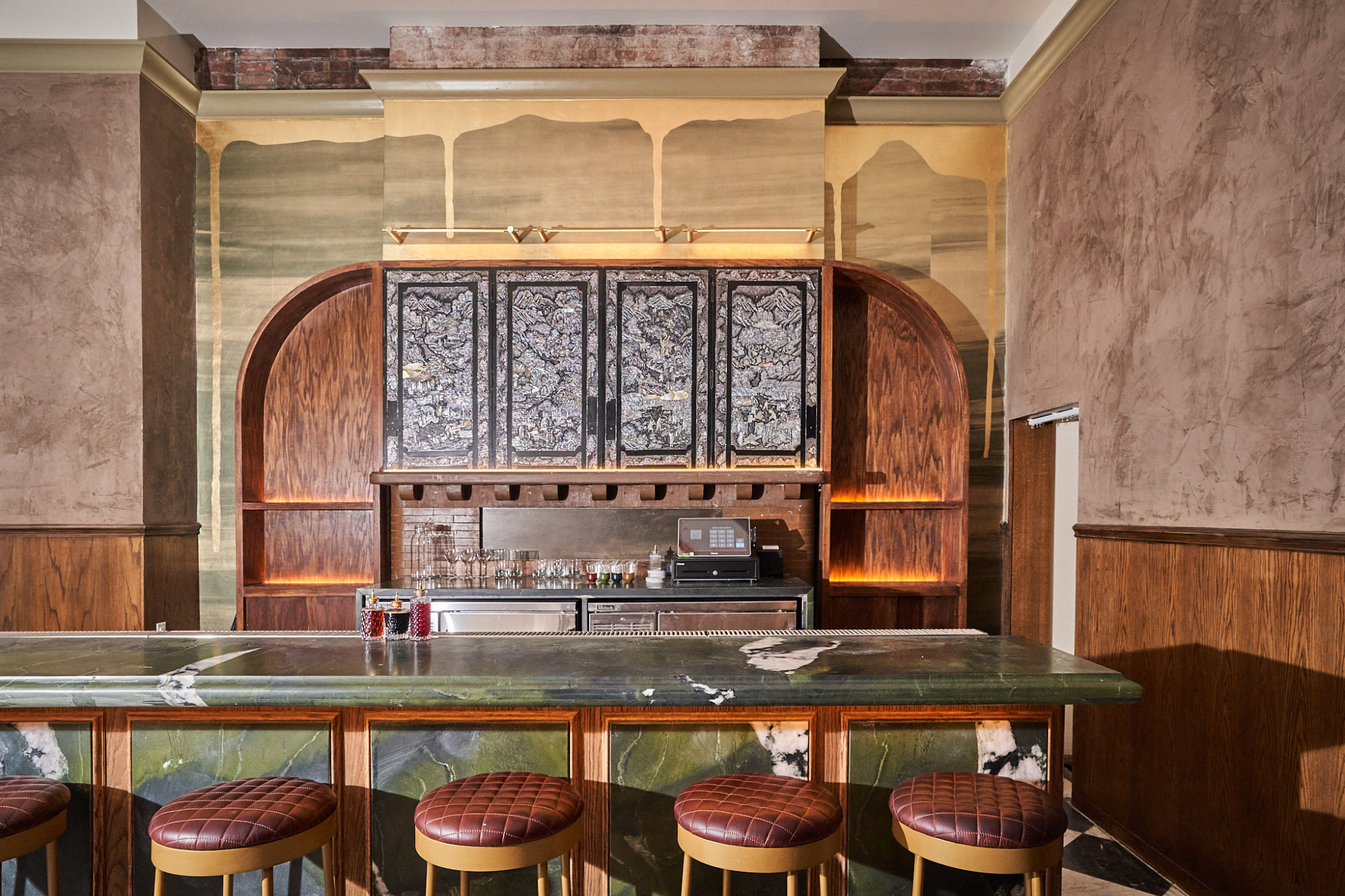
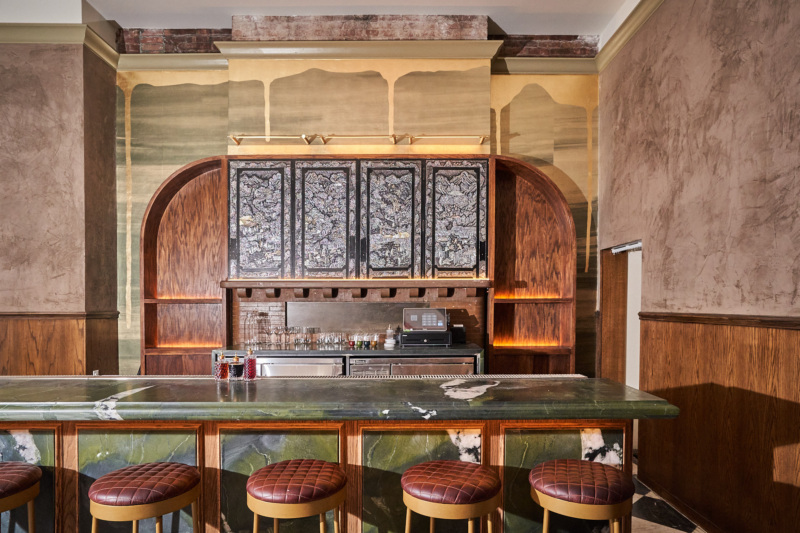
5. Be sure to take a look around when you dine there.
Hand Hospitality has brought in its favorite interior designer, Two Point Zero, to style the 2,700 square-foot space located inside the Old Grolier Club building, which was constructed in 1889 and landmarked in 1970. Here, Junho Choi, the founder of Two Point Zero, uses his signature approach of fashioning a modern Korean aesthetic into the architectural elements of a site.
Among the soaring ceilings, curved archways, and exposed brick walls, you should look out for details of traditional Korean craftsmanship. Korean Americans, especially, will find nostalgia in the minhwa (folk art) style paintings featuring colorful mountains and trees. Behind the bar, you’ll see pearlescent lacquered doors that designer Choi tells Resy he sourced from Hand Hospitality founder, Kihyun Lee’s own home, and repurposed for Moono. In the middle of the main dining floor, lies a structure of golden rods piercing through balls, representing husks of rice grains in Korea’s agrarian culture.
Moono currently takes up the three floors: the main, ground floor, and a mezzanine. There is also a third floor in the building where Kim plans to open an intimate chef’s counter concept next year.
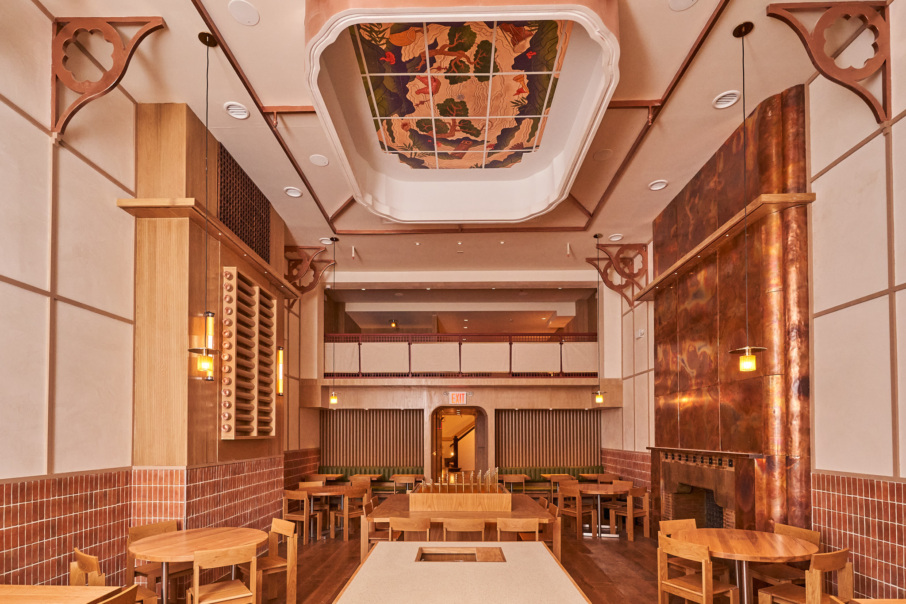
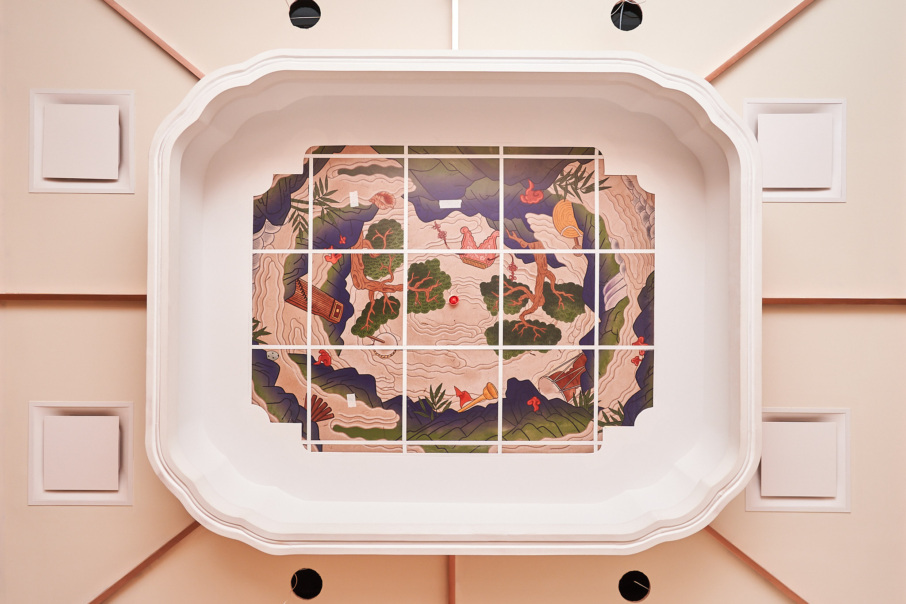
Moono is open Monday through Saturday from 5 to 11 p.m.
Caroline Shin is a Flushing, Queens-bred food journalist, and founder of the Cooking with Granny video and workshop series spotlighting immigrant grandmothers. Watch her award-winning show on YouTube, and follow her on Instagram. Follow Resy, too.







